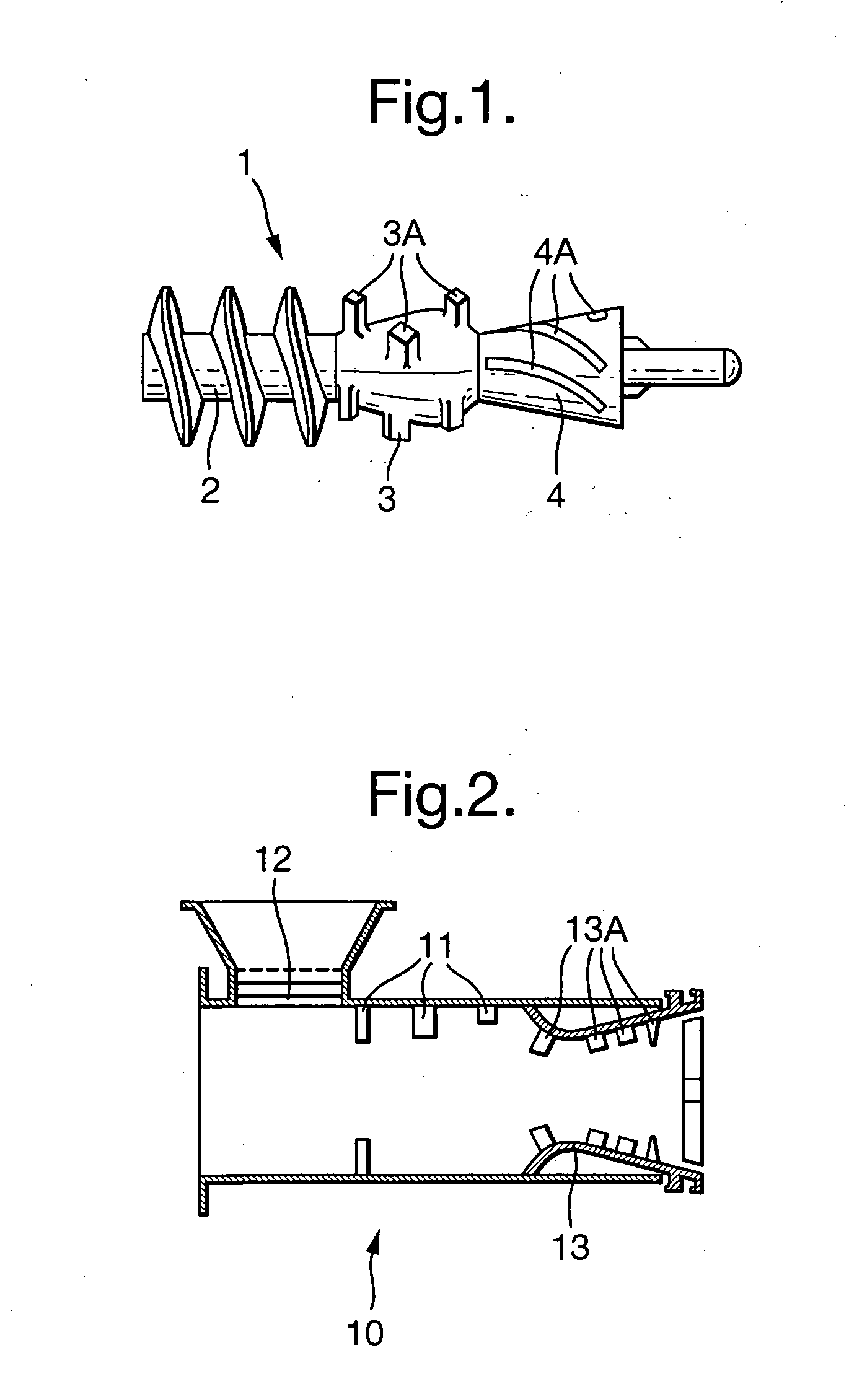Green leaf tea product and a process for the manufacture thereof
a technology of green tea and infusion, which is applied in the field of green tea, can solve the problems of unpalatable bitterness of infusions of green tea from this variety, increase in consumption of green tea,
- Summary
- Abstract
- Description
- Claims
- Application Information
AI Technical Summary
Problems solved by technology
Method used
Image
Examples
example 1
[0121] Fresh tea leaf (two leaves and a bud) from Camellia sinensis var. assamica was harvested from fields in Kenya. The fresh leaf has a moisture content of 76-80% by weight. The fresh leaf was then air-dried to a leaf moisture content of 75(±1)%. The leaf was then steamed for 60 seconds at a temperature of 96° C. to inactivate any endogenous enzymes and thus prevent fermentation.
[0122] The moisture content of the steamed leaves was then reduced to 67(±1)% by passing the leaf through two hot air drum driers in series followed by a vibratory bed hot air drier.
[0123] Leaf at the end of the vibratory bed was cooled to room temperature (˜25° C.) and then fed to a rotorvane operating at 1500 kg / hour and with the iris opening set at 5.0 cm. Macerated leaf from the rotorvane was then split into two portions and each portion fed through a double-cone processor operating at 750 kg / hour. After the double-cone processing, the macerated leaf was dried in a fluid bed drier to a moisture cont...
example 2
[0126] A green leaf tea (sample D) was prepared from var. assamica using the method given for sample A detailed in Example 1. The properties of this leaf tea were compared with those of a commercial Japanese green tea (sample E). The results are shown in Tables 2 and 3.
TABLE 2CatechinsComposition of Beverage* (wt %)SampleVariety(wt %) in LeafCatechinsCaffeineTheanineDAssamica14.40.0780.0170.0088ESinensis11.40.0770.0170.0032
*Made by infusing 2 g of sample in 200 ml water for 1.5 mins at 90° C.
[0127]
TABLE 3Haze ofColour of Beverage*BeverageSampleVarietyL*a*b*C*h*(NTU)DAssamica97.29−2.438.849.16105.38.94ESinensis90.89−4.0718.4818.92102.352.6
*Made by infusing 2 g of sample in 200 ml water for 1.5 mins at 90° C.
PUM
 Login to View More
Login to View More Abstract
Description
Claims
Application Information
 Login to View More
Login to View More - R&D
- Intellectual Property
- Life Sciences
- Materials
- Tech Scout
- Unparalleled Data Quality
- Higher Quality Content
- 60% Fewer Hallucinations
Browse by: Latest US Patents, China's latest patents, Technical Efficacy Thesaurus, Application Domain, Technology Topic, Popular Technical Reports.
© 2025 PatSnap. All rights reserved.Legal|Privacy policy|Modern Slavery Act Transparency Statement|Sitemap|About US| Contact US: help@patsnap.com

